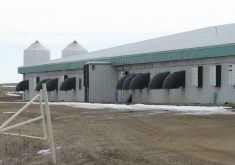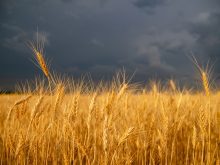The Alberta demand for organic products in grocery stores is growing 44 percent per year, according to ACNielson. Although still a small part of the total grocery package, the demand presents significant opportunities for organic producers and processors.
“Alberta imports $2 of organic products for every $1 that is grown locally,” said Rosalie Cunningham from Alberta Agriculture, in a recently released study.
“While Alberta organic operators will never be able to grow or produce certain organic products that are in demand, like coffee or bananas, there could be opportunities (for) Alberta grown organic products.”
Read Also

Determining tariff compensation will be difficult but necessary
Prime minister Mark Carney says his government will support canola farmers, yet estimating the loss and paying compensation in an equitable fashion will be no easy task, but it can be done.
The study found that Albertans bought $48 million worth of organic food in grocery stores in the year ending August 2006. Although only seven percent of Alberta’s organic producers sell into this market, these figures show potential for their future.
Selling to grocery stores is a major challenge. Stores require a consistent supply of large volumes of high quality products.
“It is highly unlikely that one producer will be able to supply such a market. It is also possible that one province will not be able to supply the market alone,” Cunningham said.
“In order to meet this demand, producers are going to have to work together and co-ordinate their efforts quickly.”
After grocery stores, the next most common source of organic product for consumers is directly from farmers. Almost a quarter of Alberta’s organic producers sell directly to the consumer, either at the farmgate or at farmers’ markets.
These markets have good growth potential, Cunningham said. For producers who are able to make the direct connections with consumers, and especially those near large urban centres, selling directly allows them to capture more of the consumer dollar.
Smaller specialty natural and organic food stores are another place for consumers to access local organic products.
“It is in this area that regionally focused producers can capitalize upon their uniqueness and find other opportunities,” Cunningham said.
These regional stores are more welcoming of unique local products. They often market a combination of organic, locally produced and environmentally friendly products.
Cunningham said opportunities also exist for organic producers who “are willing to develop the relationship and meet the product and business needs of the natural health food store.”
Only 14 percent of Alberta’s organic producers add value to their products, but these products contribute a third of all cash receipts for organic products. Clearly, processing offers higher returns.
About a quarter of Alberta’s organic producers sell to processors. It is primarily the processors who sell to retail groceries.
In this area, consumer demand greatly outstrips local production, yet only a small percentage of the organic products processed in Alberta are consumed in Alberta.
The ACNielson data shows that Canadians purchased more than $1 billion worth of organic product per year.
The demand for organic products is increasing 20 to 30 percent per year, even though the demand for conventional products is only increasing two to four percent per year. This suggests there is room to grow organics.
There are only 40 organic processors in Alberta, doing mainly primary processing.
“The transition period for a processor is not as long (as for a producer),” said Cunningham. “It is also possible for a processor to handle both organic and nonorganic product. With modification of some practices, ingredients and increased record keeping, it is possible for an existing processing plant to become certified.”
Alberta is home to 240 certified organic producers. Their main products are hay or feed, oats, wheat or durum, other grains, oilseeds, pulses and vegetables, as well as beef and poultry.
There is potential for increased production if those farmers are able to balance the needs of production with the needs of their consumers.
The great demand for organic product in Alberta is fuelled by consumers who are concerned about their health and who see organic products as safer and more nutritious. The number of people who buy organic products is increasing, as is the amount of organic product that they buy.
According to the Alberta study, “to many consumers, organics represents a more healthful option. This established niche market is not going to go away.”
For the complete Alberta marketing report, see http://www.oacc.info/Docs/RetailSalesOrganic_Canada2006.pdf (PDF format).
Frick is the prairie co-ordinator for the Organic Agriculture Centre of Canada located at the University of Saskatchewan. She can be reached at 306-966-4975, at
, or www.organicagcentre.ca.
















